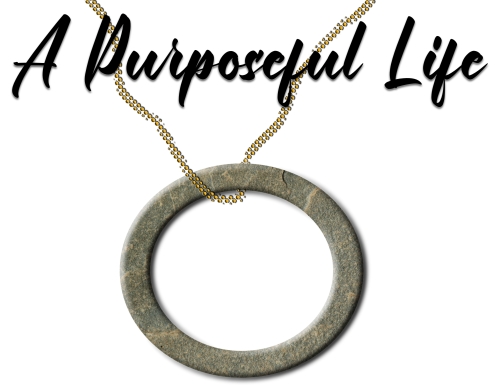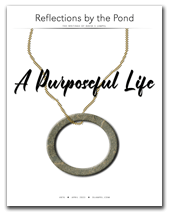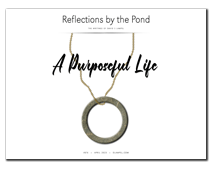Then Jesus said to His disciples, “If anyone wishes to come after Me, he must deny himself, and take up his cross and follow Me. For whoever wishes to save his life will lose it; but whoever loses his life for My sake will find it. For what will it profit a man if he gains the whole world and forfeits his soul? Or what will a man give in exchange for his soul?” (Matthew 16:24-26)
The Ubiquitous Cross
Monks hang it from their belts. Protestants hang it in their sanctuaries, and Catholics hang it, complete with the image of the dying Christ, in their living rooms. Sunday School girls and gangster molls hang it from a gold chain around their necks. It sits atop church steeple and tombstone, hangs in the window of the Five-and-Dime, and is painted in glorious Technicolor across the covers of greeting cards. The high school girl wears it as a charm on her bracelet, the professional wrestler has it dangling from a pierced ear, and the prostitute wears it as a decoration about her neck.
So the modern representation of the instrument of Christ’s death becomes a meaningless trinket.
The cross on which Jesus died bore no resemblance whatsoever to the polished gold caricatures of today. It was an ugly, splintered framework of blood-encrusted wood—no doubt still stinking from the death of its previous victim. The utilitarian framework was most certainly not in the familiar shape hanging behind choir lofts, but a low, mean perch just high enough to keep the condemned off the ground.
It was an ugly death, by design, and meant to drag on for days of suffocating agony as the victim struggled to flex his contorted legs, to push himself higher in an effort to force breath into his tortured lungs. For you see, without intervention, the condemned would slowly die from exposure and blood loss, but mostly from asphyxiation, as the lungs slowly filled with fluid.
Hang that around your neck and wear it to the tea party.
Perhaps we have memorialized the wrong thing. Christ’s death was indeed a sacrifice that should be remembered—but with sober reverence, not as a decorative article of jewelry. We don’t worship a dead criminal; we worship a risen Lord! We don’t remember our departed family members by hanging a miniature deathbed or auto accident about our neck; why should we decorate ourselves with the instrument of His agony?
Perhaps we should decorate ourselves, instead, with the sign of His victory over that death. Any common criminal could have died on a cross, but it took God to walk out of the tomb. Perhaps instead of a gold-plated cross, those wishing to adorn themselves with something that associates them with Christ should hang from their necks a stone “O”—the picture of the open tomb and the reviving, ever-budding life we have as a result, and a steady reminder that we serve a risen Lord who sits even now upon His throne in glory.
The Debt
But what are we to do with this? What are we to do with the remembrance of ancient events that we now celebrate as “Easter,” or better, Resurrection Sunday? Surely our choice of adornment does not represent the full warp and woof of our faith. Whether about our necks we wear a shiny gold cross or a crude circle, it is nothing but empty vanity if there is not a purposeful life behind it.
Whatever we choose for personal adornment, our Easter joy is based on Calvary—the place of Christ’s death, burial, and resurrection. Our faith is based on the open tomb of Easter morning, for in His resurrection we have the promise of our own. But our steady walk of devotion is based on His once-for-all sacrifice on the cross.
Where the Lamb of God’s blood flowed down, there we have the debt we can never repay—a debt God does not expect us to repay, nor even to try. The believer’s life should never become a series of acts designed to pay for salvation, for that cheapens the one act that closed the transaction.
Our salvation is paid for.
In full.
The Response
Still, while we cannot and should not try to repay Jesus for what He did for us, we can honor it in our faithful, purposeful dedication to living for Him.
It may be enough for some, but for the believer intent on being made into the image of Christ as he journeys upward toward God, a life of simple gratitude or appreciation is not sufficient. There is something primal buried deep within the soul that clamors to express more. Struggling always against the weak and lazy flesh, the spirit of the believer yearns to be united with the Spirit of God in an attitude of worshipful submission—to express a much deeper gratitude in a life of service to His name.
We look upon that ugly and profane cross, that instrument of gleeful torture (for what else can one call an intentional, public death by slow asphyxiation and drowning?) and our hearts break. The first child-like response is, indeed, one of thanksgiving and praise for a God who would willingly sacrifice Himself for His followers. With that despicable, glorious sight in our gaze, we fall down in grateful worship.
Even when our praise is authentic and unselfish, after a while we realize that it is not nearly enough. Something in us cries out to express even more for this gracious, butchered yet risen Savior. Our words, our songs, our corporate devotion are not sufficient to express what lies yet unexpressed in our heart. We must give Him more than words and songs—we must give Him everything that we are. We must come to a point of agreement with the apostle Paul, who wrote,
Or do you not know that your body is a temple of the Holy Spirit who is in you, whom you have from God, and that you are not your own? For you have been bought with a price: therefore glorify God in your body.
1 Corinthians 6:19-20
Issue #876, April 2023
Reflections by the Pond is published monthly at dlampel.com and is © 2023 David S. Lampel.
Unless otherwise indicated, all Scripture is from the New American Standard Bible (Updated Edition). This and all of our resources are offered free-of-charge to the glory and praise of Christ our Lord.



